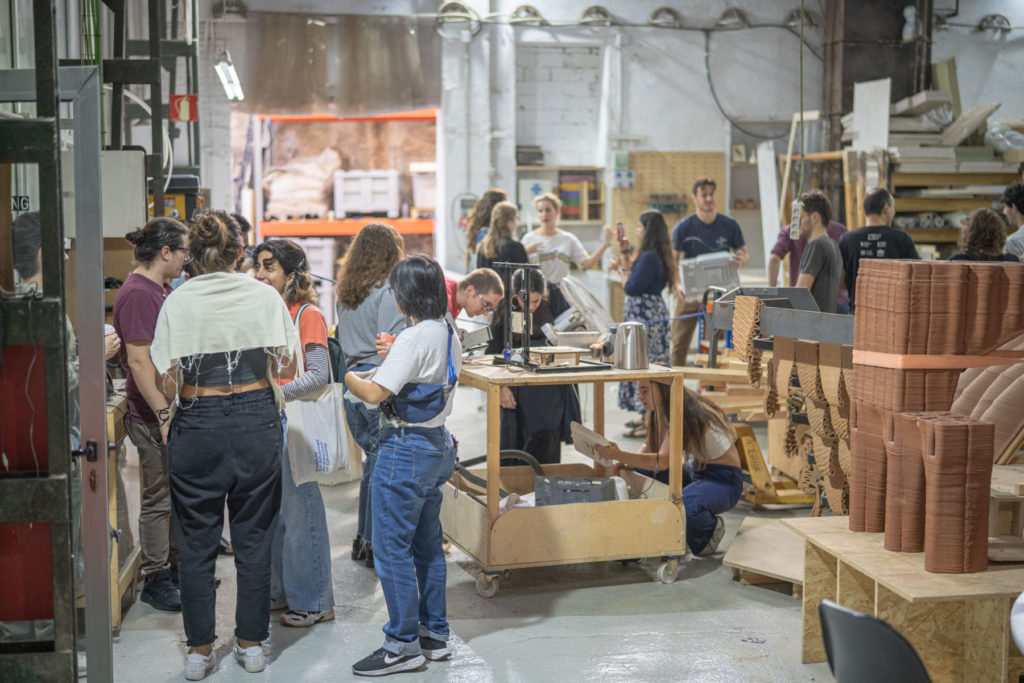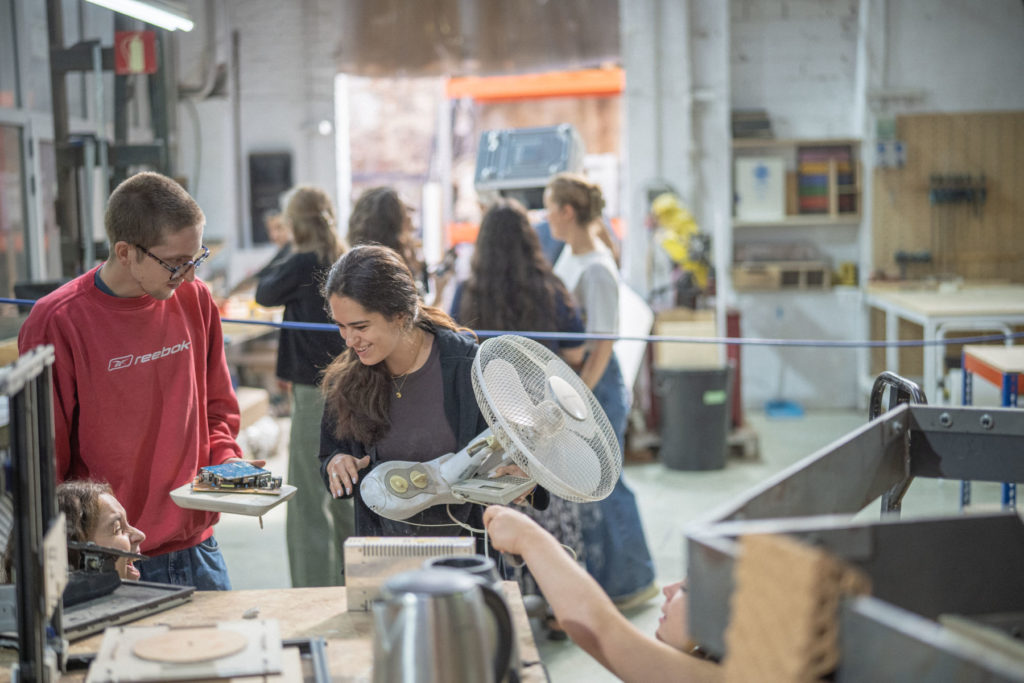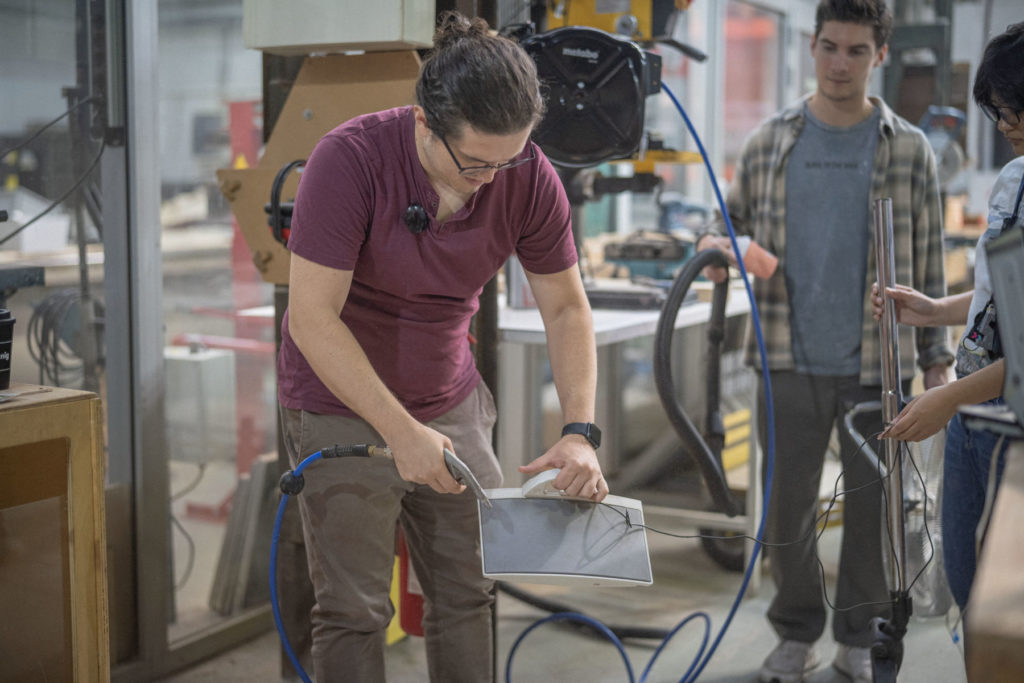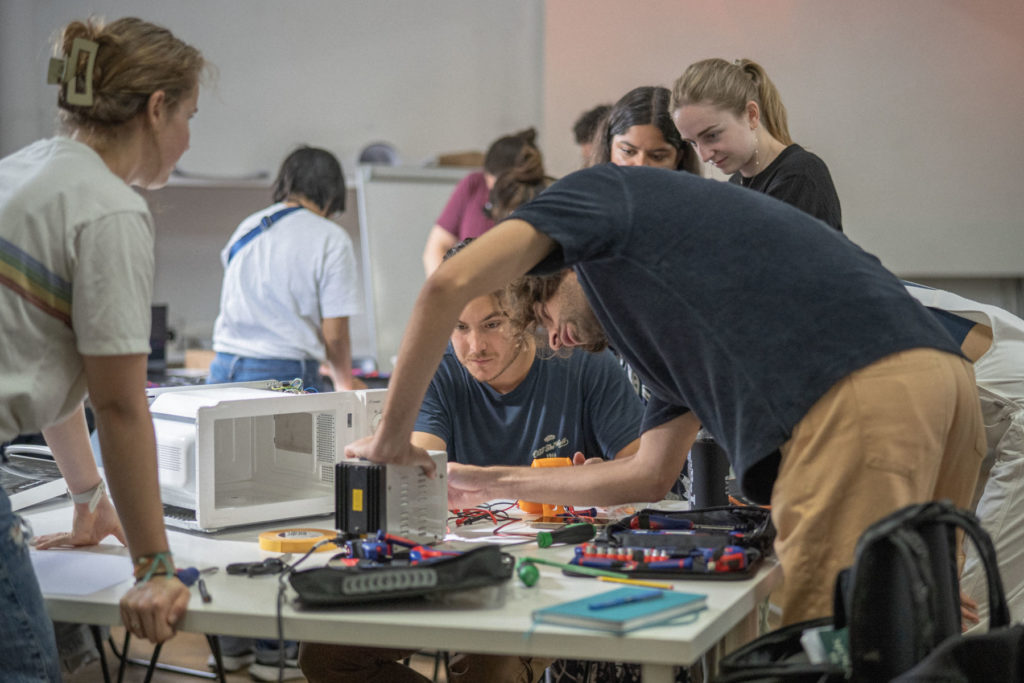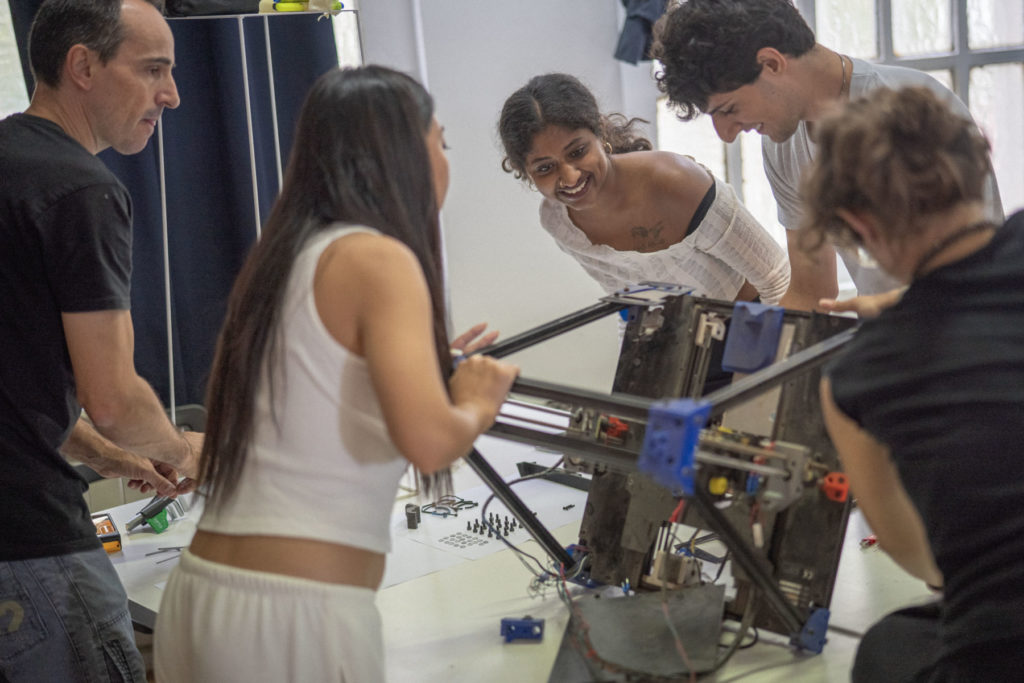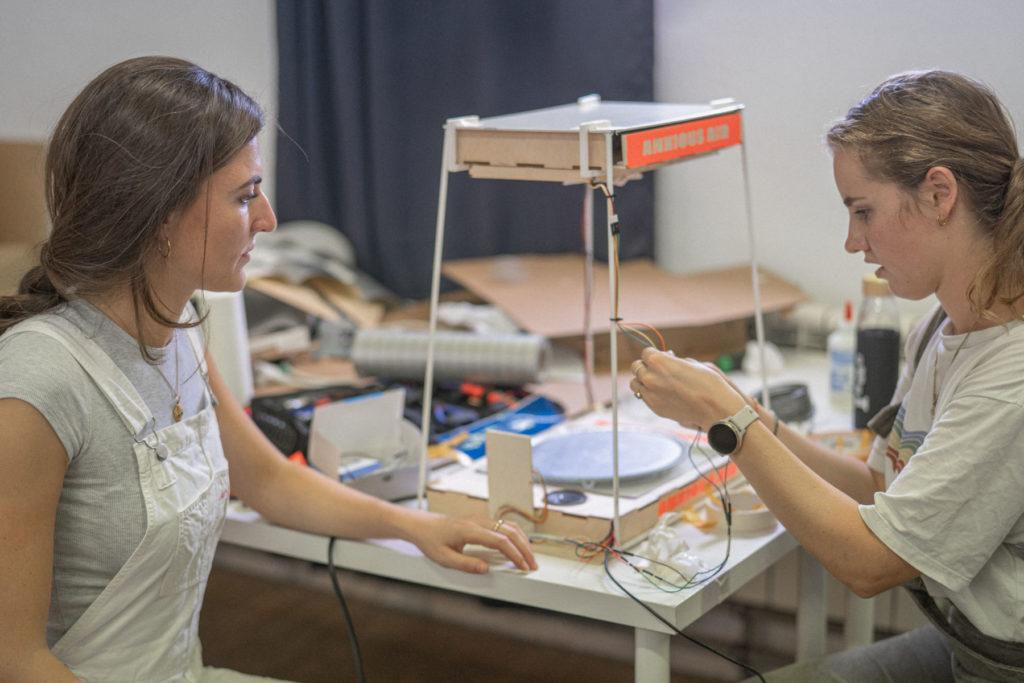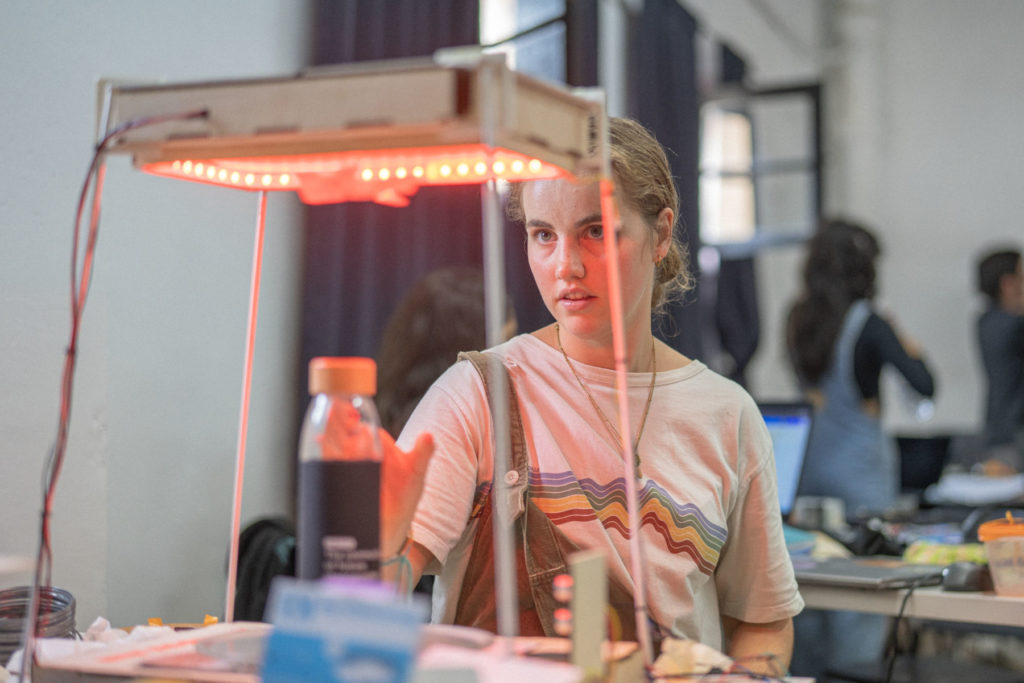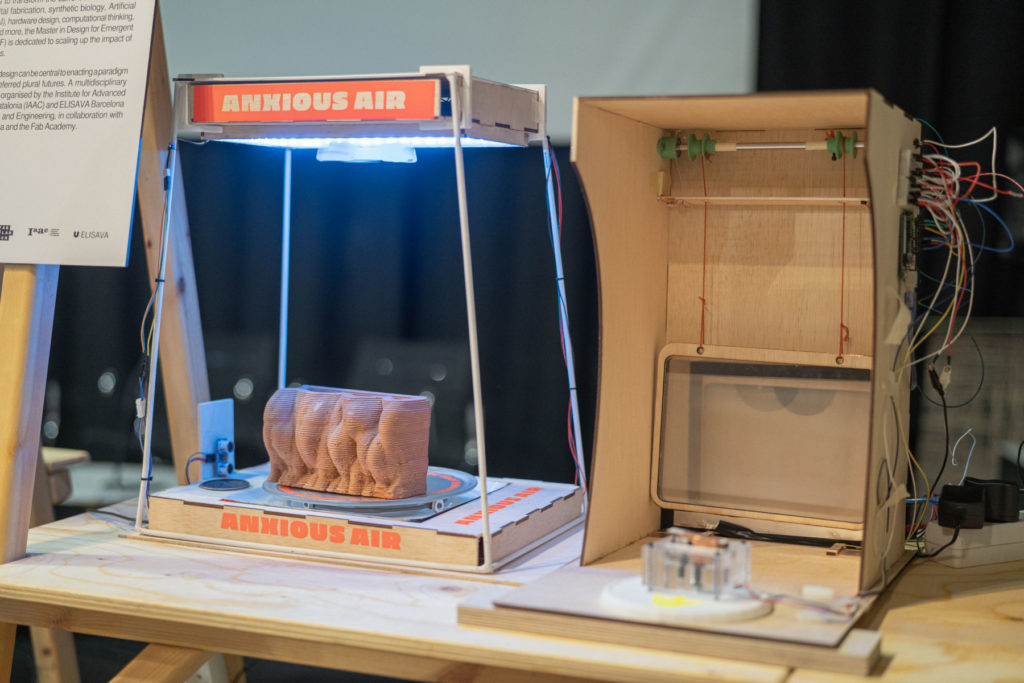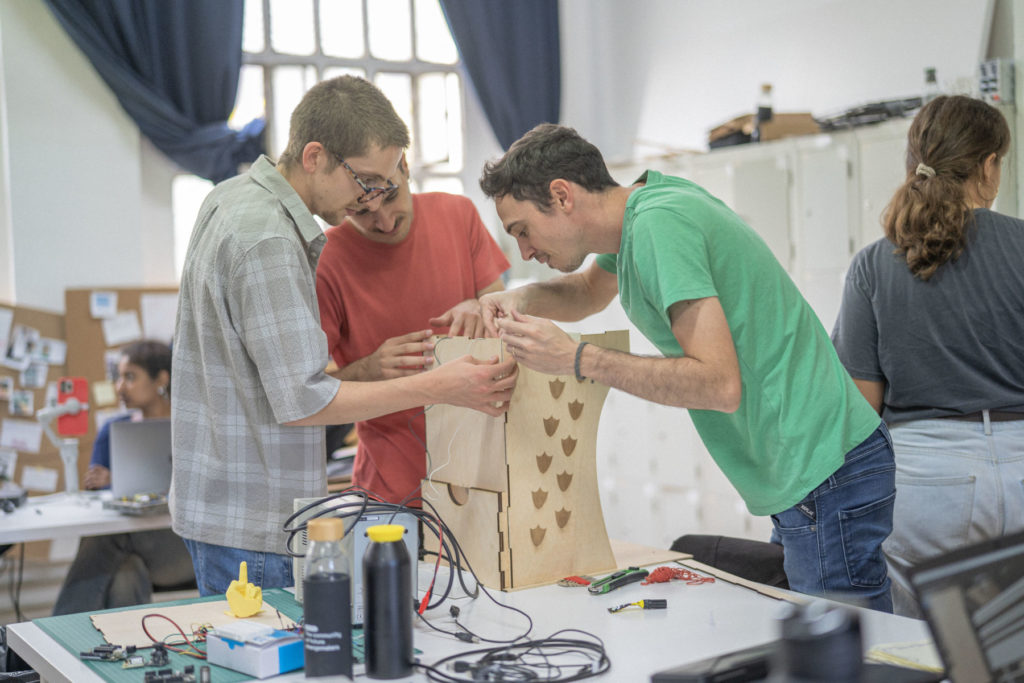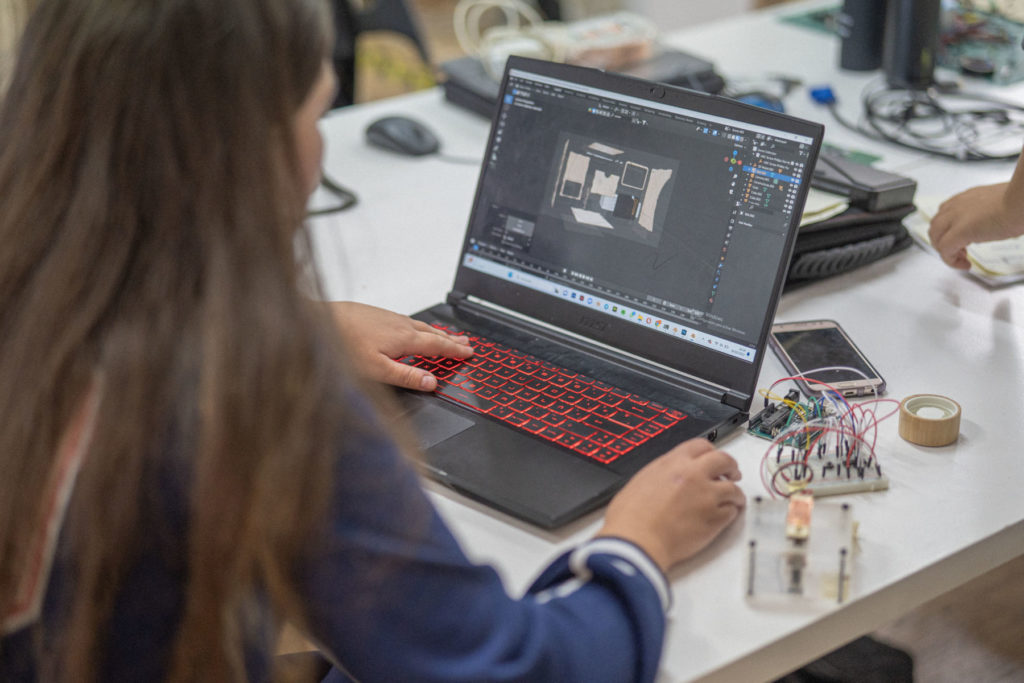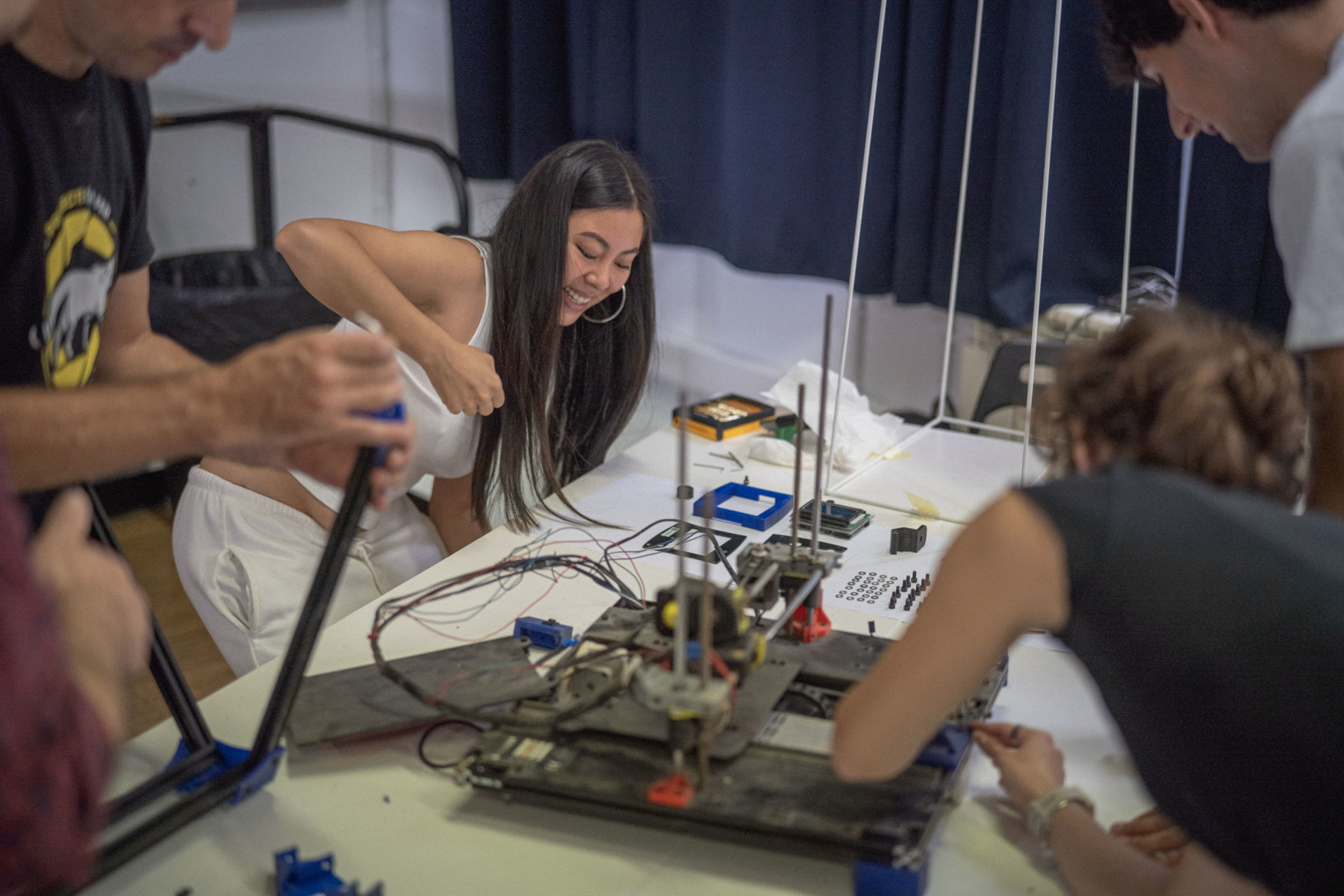
Rethinking the ways we make things
MDEF class teaching students how to create “almost useful machines”
We spend our lives interacting with objects and interfaces whose underlying technology we hardly understand, not merely due to its complexity but also because it was intended to be closed by design. In the course of two weeks, students of the Master in Design for Emergent Futures (MDEF) learned about these complexities by disassembling old appliances and using their parts to build “honest” mechanical artifacts.
Fab Labs are making it accessible for any citizen to make anything anywhere while sharing it with global networks of knowledge. This allows the acceleration of design, development and deployment processes for new products to be born. Traditional planning and urbanism are being disrupted by the advancement of technology and the dynamic transformation of society during the last half century. It is important to rethink how we make things and why, and generate active and practical conversations through projects and prototypes that become manifests themselves.
In a practical and intensive two-week experimental program part of Term 1 of the Master in Design for Emergent Futures, students were introduced to the Fab Lab environment by means of fabrication and physical computing. The methodology has been designed in a way that allows students to fill knowledge gaps and prepare them to succeed in their projects by improving their experience in rapid prototyping.
Using the idea of hacking, MDEF students explored the internal components of everyday objects, from coffee machines to wi-fi networks, while learning how to use open software and hardware tools to change the way they work and interface with the world. By first understanding how different machines work through the process of disassembling them, they then used the parts to design their own “almost useful machines”. The goal of this impact experience was to inspire and motivate the participants to use the possibilities of digital manufacturing and technologies to prototype, design, fabricate and program “honest” mechanical artifacts.
Discover a couple of the projects that current MDEF students created during “The Machine Paradox” week.
Anxious Air
Concept
Have you ever reheated your food in the microwave so much that it makes it impossible to eat? Carmen, Carlotta, Manuja, Sophie and Oliver designed a machine to solve this common struggle. By salvaging parts from a microwave, they build Anxious Air, a machine meant to cool down food.
How does it work?
By placing food on top of a microwave plate, two mechanisms start working. The first one detects the weight and activates the rotation motor which starts turning the plate. At the same time it turns the fan on so that the food can start cooling down faster. The second mechanism detects the distance of the object and activates a strong beeping sound.
The F–k Duck Machine
Concept
How much pain are you willing to take to feed your F.O.M.O.*? Annna, Anthuanet, Flora, Jorge, Marius & Núria explored the question by creating a machine from the parts of an old LED monitor which feeds the F.O.M.O. of the person standing in front of it.
*F.O.M.O. (fear of missing out)
noun
Anxiety that an exciting or interesting event may currently be happening elsewhere,
often aroused by posts seen on social media.
How does it work?
The machine shows and hides a video playing on an iPad by using one of the polarized filters found on the screen. When the user sees the initially hidden video, it activates a curiosity of the unseen. The screen can be revealed by the pressing of a button but if the person wants to continue watching the screen and feed their F.O.M.O., they have to keep pressing it. Each push of the button leads to an electroshock, so the more curious the user is, the more times they’ll be exposed to electric shocks.
Discover the Master in Design for Emergent Futures here
